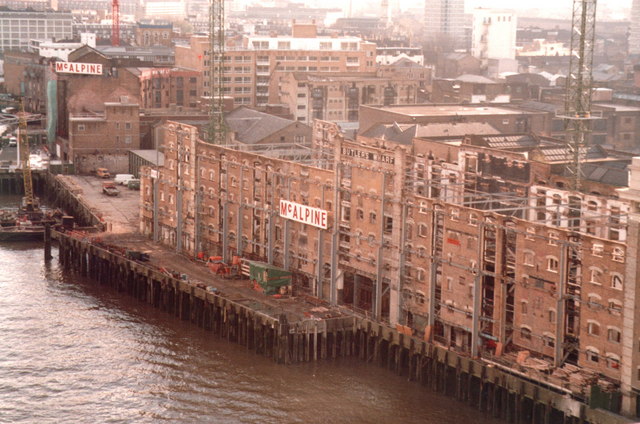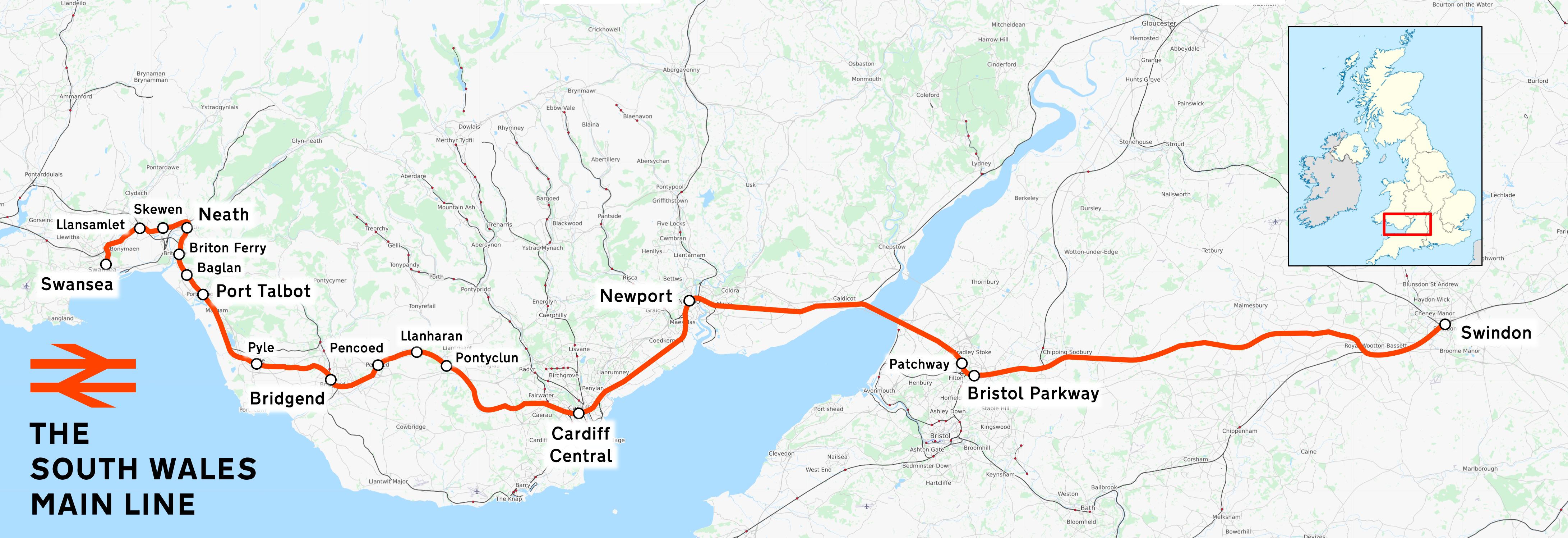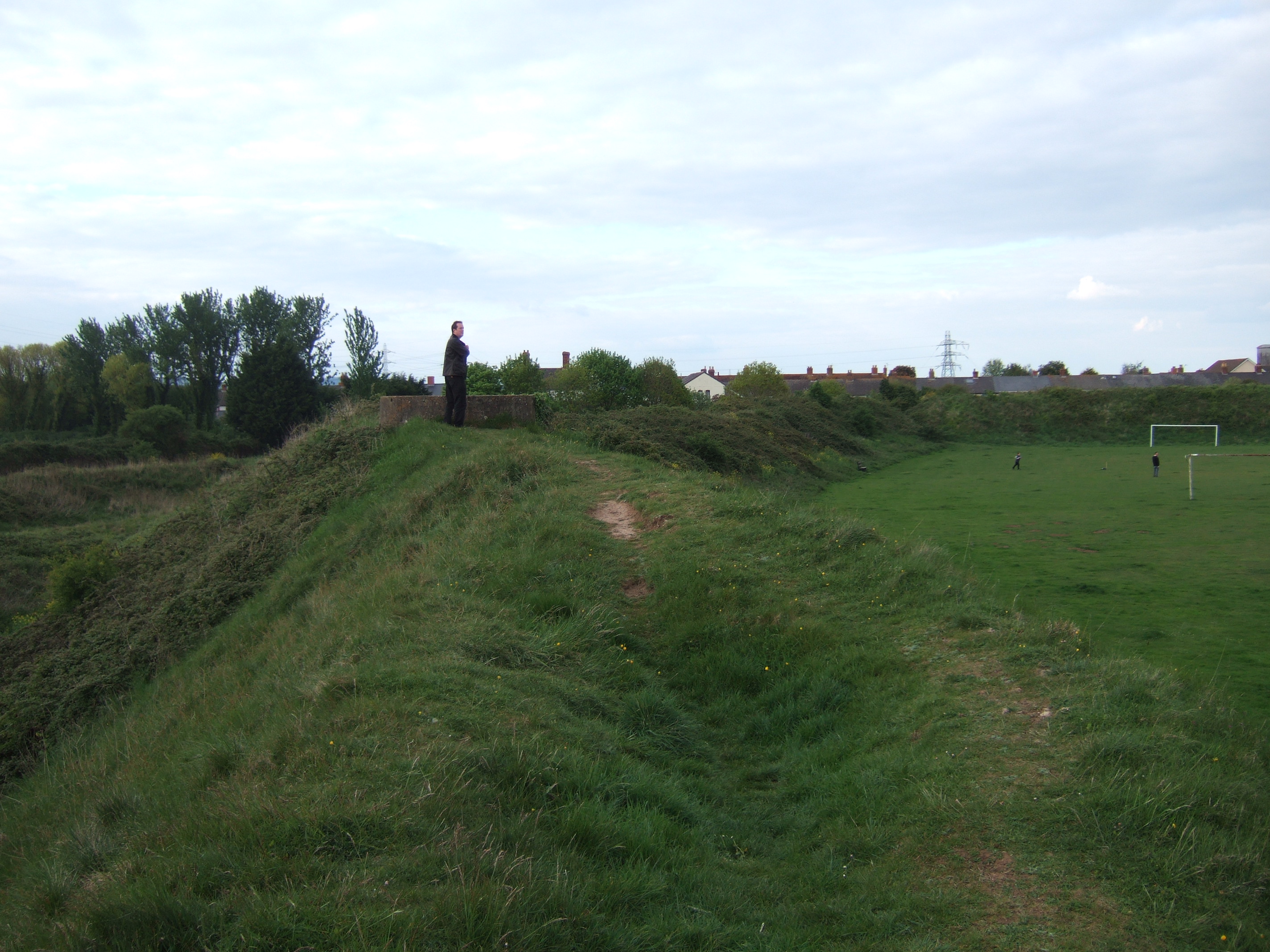|
Caldicot Railway Station
Caldicot railway station is a part of the British railway system owned by Network Rail and is operated by Transport for Wales Rail, Transport for Wales. It serves the town of Caldicot, Monmouthshire, Caldicot in Monmouthshire, Wales. It is located between Chepstow and the city of Newport, Wales, Newport on the Gloucester line; the line to Bristol via the Severn Tunnel runs just to the north but there are no platforms here; however, Severn Tunnel Junction railway station, Severn Tunnel Junction station is within walking distance for those wanting to travel to Bristol. History The railway line through Caldicot was built as the broad gauge South Wales Railway in 1850, although the nearest station was at Portskewett, two miles to the east. In 1861 a private Siding (rail), siding was opened to serve the Caldicot Iron & Wire Works, from 1880 the Severn Tinplate Works, on what is now the industrial estate on the Sudbrook road, south of the Caldicot Castle, castle. In typical broad gauge ... [...More Info...] [...Related Items...] OR: [Wikipedia] [Google] [Baidu] |
Caldicot, Monmouthshire
Caldicot ( cy, Cil-y-coed) is a market town and community in Monmouthshire, Wales. The town is located between Chepstow and the city of Newport. The site adjoins the Caldicot Levels, on the north side of the Severn Estuary. The population of the built-up area was around 11,000. It has a large school, Caldicot School, and is known for its medieval castle. The built-up area includes Portskewett. Caldicot had a population of 9,604 in 2011. History There was considerable activity in the area during the Bronze Age. Excavations near the Nedern Brook beside the castle revealed a plank from a boat and complex wooden structures in the former river bed. The boat probably traded across the Severn with the farmers and traders of Somerset. Later, in Roman times, it is likely that trading vessels sailed up the Nedern Brook to Caerwent. The discovery of kilns also shows that coarse pottery was produced in the village during Roman times. In 1074, following the Norman Conquest, the manor o ... [...More Info...] [...Related Items...] OR: [Wikipedia] [Google] [Baidu] |
Siding (rail)
A siding, in rail terminology, is a low-speed track section distinct from a running line or through route such as a main line, branch line, or spur. It may connect to through track or to other sidings at either end. Sidings often have lighter rails, meant for lower speed or less heavy traffic, and few, if any, signals. Sidings connected at both ends to a running line are commonly known as loops; those not so connected may be referred to as single-ended or dead-end sidings, or (if short) stubs. Functions Sidings may be used for marshalling (classifying), stabling, storing, loading, and unloading vehicles. Common sidings store stationary rolling stock, especially for loading and unloading. Industrial sidings (also known as spurs) go to factories, mines, quarries, wharves, warehouses, some of them are essentially links to industrial railways. Such sidings can sometimes be found at stations for public use; in American usage these are referred to as team tracks (after the use ... [...More Info...] [...Related Items...] OR: [Wikipedia] [Google] [Baidu] |
United States Army Air Forces
The United States Army Air Forces (USAAF or AAF) was the major land-based aerial warfare service component of the United States Army and ''de facto'' aerial warfare service branch of the United States during and immediately after World War II (1941–1945). It was created on 20 June 1941 as successor to the previous United States Army Air Corps and is the direct predecessor of the United States Air Force, today one of the six United States Armed Forces, armed forces of the United States. The AAF was a component of the United States Army, which on 2 March 1942 was divided functionally by executive order into three autonomous forces: the Army Ground Forces, the United States Army Services of Supply (which in 1943 became the Army Service Forces), and the Army Air Forces. Each of these forces had a commanding general who reported directly to the Chief of Staff of the United States Army, Army Chief of Staff. The AAF administered all parts of military aviation formerly distributed am ... [...More Info...] [...Related Items...] OR: [Wikipedia] [Google] [Baidu] |
Sir Robert McAlpine
Sir Robert McAlpine Limited is a family-owned building and civil engineering company based in Hemel Hempstead, England. It carries out engineering and construction in the infrastructure, heritage, commercial, arena and stadium, healthcare, education and nuclear sectors. History Sir Robert McAlpine, 1st Baronet, Robert McAlpine was born in 1847 in the Scottish village of Newarthill near Motherwell. From the age of seven he worked in the nearby coal mines, leaving at 16 to become an apprentice bricklayer. Later, working for an engineer, he progressed to being foreman before starting to work on his own account at the age of 22 (1869). He had no capital other than that he could earn himself and his first contract involving the employment of other men had to be financed by borrowing £11 from the butcher. From there, McAlpine enjoyed rapid success; the early contracts centred on his own trade of bricklaying and by 1874 he was the owner of two brickyards and an employer of 1,000 men.J ... [...More Info...] [...Related Items...] OR: [Wikipedia] [Google] [Baidu] |
Royal Navy Propellant Factory, Caerwent
The Royal Navy Propellant Factory, Caerwent was a facility at Caerwent, Monmouthshire, Wales, UK, (later RAF Caerwent) which was originally dedicated to the manufacture and storage of Royal Naval munitions. Since its closure as an armament works in 1966, it has been used by the US military and the British Army. It is now used as the Caerwent Training Area. A new purpose-built military barracks is set to be built on the site to house 1st The Queen's Dragoon Guards and 1st Battalion, The Rifles from 2027. The large military site is situated north of the A48 road about west of Chepstow and east of Newport. The site, which is about by , encompasses a perimeter road that is more than long. The factory had its own standard gauge railway system, miles of roads and a wide range of buildings, from small earth-banked bomb stores to large four storey built brick buildings. Since 1993, the former factory site has been used for a variety of military and civil purposes, including milita ... [...More Info...] [...Related Items...] OR: [Wikipedia] [Google] [Baidu] |
Caldicot Levels
The Caldicot and Wentloog Levels are two areas of low-lying estuarine alluvial wetland and intertidal mudflats adjoining the north bank of the Severn Estuary, either side of the River Usk estuary near Newport in south east Wales. They are also known collectively as the Monmouthshire Levels or Gwent Levels, and the name Wentloog is sometimes spelled Wentlooge in official publications. The Caldicot Level lies to the southeast of Newport between the River Usk and River Wye and consists of . It is home to Newport Wetlands Reserve. The Wentloog Level lies to the southwest between the River Usk and Rhymney River and consists of . The levels are formed from tidal deposits and alluvium, which have been recurrently inundated and reclaimed from the Severn Estuary by humans since Roman times. They have been patterns of settlement, enclosure and drainage systems belonging to successive periods of use, and are extremely rich archaeologically, with finds from the Mesolithic, Bronze Age ... [...More Info...] [...Related Items...] OR: [Wikipedia] [Google] [Baidu] |
Ordnance Survey Map
, nativename_a = , nativename_r = , logo = Ordnance Survey 2015 Logo.svg , logo_width = 240px , logo_caption = , seal = , seal_width = , seal_caption = , picture = , picture_width = , picture_caption = , formed = , preceding1 = , dissolved = , superseding = , jurisdiction = Great BritainThe Ordnance Survey deals only with maps of Great Britain, and, to an extent, the Isle of Man, but not Northern Ireland, which has its own, separate government agency, the Ordnance Survey of Northern Ireland. , headquarters = Southampton, England, UK , region_code = GB , coordinates = , employees = 1,244 , budget = , minister1_name = , minister1_pfo = , chief1_name = Steve Blair , chief1_position = CEO , agency_type = , parent_agency = , child1_agency = , keydocument1 = , website = , footnotes = , map = , map_width = , map_caption = Ordnance Survey (OS) is the national mapping agency for Great Britain. The agency's name indicates its original military purpose (se ... [...More Info...] [...Related Items...] OR: [Wikipedia] [Google] [Baidu] |
Gloucester Railway Station
Gloucester railway station (formerly known as Gloucester Central station) is a railway station serving the city of Gloucester in England. The station was originally built as the terminus of the Birmingham and Gloucester Railway in 1840, but the arrival of the (broad gauge) Bristol and Gloucester Railway and Cheltenham and Great Western Union Railway in 1844, and then conversion to a through station for the South Wales Railway in 1851 resulted in a very complex layout. Subsequent closures and rationalization have left Gloucester with a station that is located off the main Bristol-Birmingham line, meaning Great Western Railway services must reverse, while CrossCountry and Transport for Wales services continue to Newport. History The railway development at Gloucester was very complex involving four different railway companies and five distinct railway stations. The first company to open was the Birmingham and Gloucester Railway, which was a standard gauge line opening 4 Novembe ... [...More Info...] [...Related Items...] OR: [Wikipedia] [Google] [Baidu] |
Caldicot - Low Bridge Near The Station - Geograph , a district in the parish of Walton, Milton Keynes, in ceremonial Buckinghamshire, England
{{place name disambiguation ...
Caldicot may refer to: * Caldicot, Buckinghamshire * Caldicot, Monmouthshire * Caldicot (hundred) * Caldicot Castle, Monmouthshire * Caldicot railway station, a part of the British railway system * Caldicot RFC, a Welsh rugby union club * Caldicot School, a coeducational and non-selective secondary school in Caldicot, Monmouthshire, South Wales See also * Caldecote (other) * Caldicott (other) * Caldecott (other) * Caldecotte Walton (historically) was a hamlet that is now a district and civil parish in Milton Keynes, Buckinghamshire, England. For local government purposes, it is part of the Danesborough and Walton electoral ward. The historic hamlet is located ... [...More Info...] [...Related Items...] OR: [Wikipedia] [Google] [Baidu] |
South Wales Main Line
The South Wales Main Line ( cy, Prif Linell De Cymru), originally known as the London, Bristol and South Wales Direct Railway or simply as the Bristol and South Wales Direct Railway, is a branch of the Great Western Main Line in Great Britain. It diverges from the core London-Bristol line at Royal Wootton Bassett beyond Swindon, first calling at Bristol Parkway, after which the line continues through the Severn Tunnel into South Wales. Great Western Railway operates Class 800 trains between London and South Wales, and Classes 253, 254 and 255 High Speed Trains on services between Cardiff and South West England. CrossCountry provides services from Cardiff to Nottingham via Severn Tunnel Junction and thence the Gloucester to Newport Line via Gloucester and Birmingham. Transport for Wales operates services between South Wales, and North Wales and the Midlands on the line. The line between Wootton Bassett and Cardiff Central is electrified using the 25 kV AC overhead system, ... [...More Info...] [...Related Items...] OR: [Wikipedia] [Google] [Baidu] |
Sudbrook, Monmouthshire
Sudbrook is a village in Monmouthshire, South Wales, south east Wales. It is located 4 miles south west of Chepstow and 1 mile east of Caldicot, Monmouthshire, Caldicot. It lies close to the Second Severn Crossing on the Severn Estuary, and adjoins the village of Portskewett. It was largely built in the late 19th century for workers on the Severn Tunnel, Severn railway tunnel. At that time it was also known as Southbrook. History Sudbrook hill fort Sudbrook was of early historic importance in guarding the Severn estuary at an ancient ferry crossing place. An Iron Age hillfort is located on the coast, probably built and occupied by the Silures from the 2nd century BC and occupied by the Roman Britain, Romans from the 1st century AD until the 4th century. The hillfort was originally much bigger than now having been eroded over the centuries. Finds of Roman currency, Roman coins at Black Rock, Portskewett, show that the ferry crossing was in use in Roman times, on the route ... [...More Info...] [...Related Items...] OR: [Wikipedia] [Google] [Baidu] |
Standard Gauge
A standard-gauge railway is a railway with a track gauge of . The standard gauge is also called Stephenson gauge (after George Stephenson), International gauge, UIC gauge, uniform gauge, normal gauge and European gauge in Europe, and SGR in East Africa. It is the most widely used track gauge around the world, with approximately 55% of the lines in the world using it. All high-speed rail lines use standard gauge except those in Russia, Finland, and Uzbekistan. The distance between the inside edges of the rails is defined to be 1435 mm except in the United States and on some heritage British lines, where it is defined in U.S. customary/Imperial units as exactly "four feet eight and one half inches" which is equivalent to 1435.1mm. History As railways developed and expanded, one of the key issues was the track gauge (the distance, or width, between the inner sides of the rails) to be used. Different railways used different gauges, and where rails of different gauge met – ... [...More Info...] [...Related Items...] OR: [Wikipedia] [Google] [Baidu] |


.jpg)





